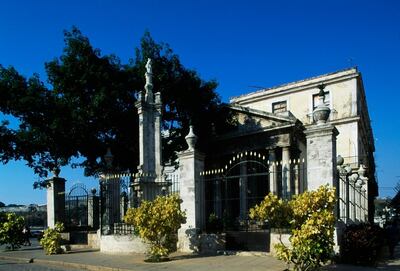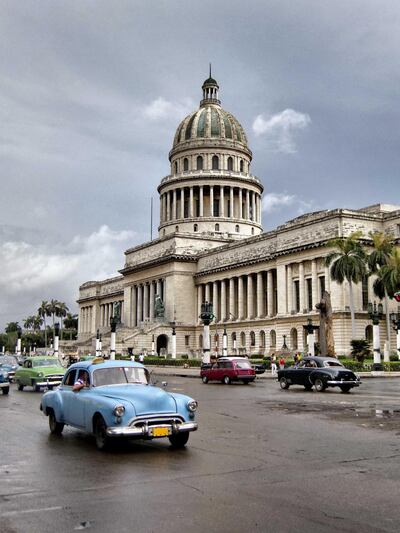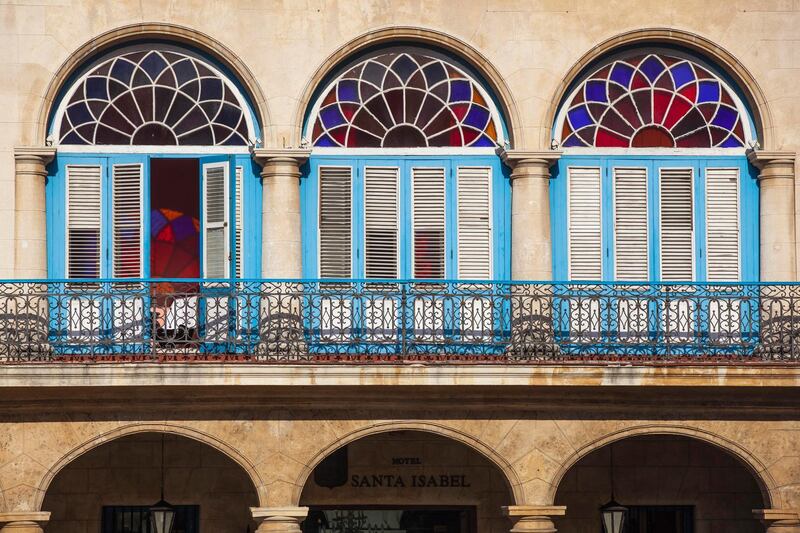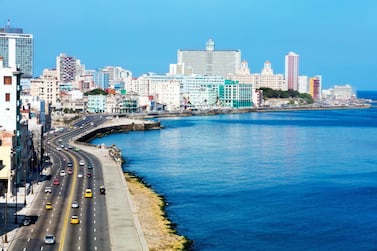Amid the towering colonial buildings of Old Havana stand a few ruins, plants growing within their hollow walls. It's difficult to imagine that merely 30 years ago, the entire area was on the verge of collapse. By the early 1990s, trade embargoes and neglect had led to the near ruin of one of the Caribbean's oldest and most beautiful cities. Old Havana is thriving today only thanks to a project that used money spent in restaurants and hotels to fund emergency restorations, as well as social projects such as old-age homes and health clinics, ensuring that the city is safe from destruction, but has not been hollowed out by tourism.
In November, Havana celebrated its 500th birthday, an anniversary marked by a spate of high-profile restoration projects. Yet even as the old city is brought back from the brink of ruin, problems abound. Old Havana, a Unesco World Heritage Site, takes priority, leaving other areas of the city to decay.
“We need to keep working in Old Havana but what about Centro Havana?” says architect Victor Marin. “There’s a lot of dilapidation. There’s a lot of Art Deco and Art Nouveau architecture that should be, if not restored, at least cleaned and ensured an appropriate use.”
An expert in conservation and restoration, Marin worked for the Cuban government and later for Unesco, immersing himself in the battle to save Havana's historic architecture, before he retired. On a November afternoon, he drives around the city, pointing out landmarks and recounting stories about Havana's history.
As we drive down the Malecon, the city's long, curving seaside promenade, we pass a building from the 1920s that has recently collapsed. Its facade is a pile of rubble, its interior floors sagging and unstable. The entire seafront is under threat of damage from the sea and seasonal hurricanes, Marin explains. "From 1899 to 1902, the first section of the Malecon, near the Prado, was created," he says. "The idea was to have some trees, which were never planted because when the wall of the Malecon is struck by waves, it creates splashes that affect all the architecture and cause flooding. Every year, the floods get higher and higher because of climate change."
Despite its problems, Havana will fascinate anyone with an interest in history. From the faded beauty of the old colonial city, to Vedado's modernist relics of 1950s excess, these five landmarks tell fascinating stories about its past ...
The Ceiba Tree

One of Havana’s most enduring landmarks is also its most ephemeral. To one side of the Plaza de Armas, Havana’s oldest square, is an imitation Greco-Roman temple known as El Templete. In front of it stands a young ceiba tree. Revered by the indigenous inhabitants of Cuba and in Afro-Cuban culture, the ceiba commemorates the city’s founding.
On November 16, 1519, Spanish conquistadors are said to have held their first mass and city council meeting beneath the shade of a ceiba. For 500 years, a ceiba has marked the spot. The current tree was planted in 2016 to replace a decades-old one that had to be felled. Each year on the city's birthday, locals queue up for hours to circle the tree three times, hugging its trunk and kissing its bark, dropping coins at its roots and making a wish for the year to come.
Plaza Vieja
Plaza Vieja (Old Square) is one of the early success stories of the restoration of Old Havana. Marin co-ordinated the revival of the large square, which is ringed with 17th, 18th and 19th-century mansions. Plaza Vieja dates from 1559, but, by the 1990s, it had been turned into an ugly car park, encircled by historic buildings that were collapsing where they stood.
One of the major challenges of renovation projects in Havana is rehoming the families living in old mansions. As soon as one set of occupants is offered new homes, Marin says, other people move in, knowing that they cannot be evicted without being offered an alternative. In Plaza Vieja, houses large enough to accommodate 14 families were often occupied by 40, he adds. However, since 2011, when reforms by Raul Castro allowed people to sell and rent their homes and to launch private enterprises for the first time, and as tourism has skyrocketed, renovated areas of the old city like Plaza Vieja are swiftly gentrifying. "Today, after all these fights about who would move and who would stay, the people who stayed are selling the apartments to be a restaurant or a bed and breakfast."
The Capitolio

Commissioned in 1926, when Cuba was flush with sugar-cane money, El Capitolio – which features a gold-plated cupola – took 5,000 workers three years to complete. The grand neoclassical building housed the country's parliament and is inspired by the Capitol in Washington, integrating elements of the Pantheon in Paris and St Peter's Basilica in Rome.
To Castro, however, the granite and marble edifice was a symbol of excess. He dissolved Congress and repurposed the building as the headquarters of the science ministry. Over the decades, it fell into disrepair, but was restored for the city's 500th anniversary. In November, it opened for tours, allowing visitors to marvel at the soaring 14.6-metre bronze Statue of the Republic in its interior, one of the world's largest indoor statues.
The Rex Cinema
Unveiled in 1938, the Rex Cinema was Havana's first multiplex, with two separate screens and a grand lobby. The Art Deco building is located in Havana Centro on the famous San Rafael Boulevard, and the cinema operated until 1980, when it was abandoned, slowly falling into ruin.
In January, however, the building is set to reopen as the Rex Neon Centre, a cultural centre and museum dedicated to Havana’s famous neon signage.
The Riviera Hotel
"The story of the Rivera Hotel is a wonderful tale about the mobsters in Cuba," says Marin, explaining that it was built by the infamous American gangster Meyer Lansky, who wanted to create a Las Vegas-style casino far from FBI scrutiny. The 21-storey monolith opened in 1957; the casino was closed in 1960, but the hotel remains open to this day.
“When you enter, the first thing you see is the casino and the cabaret,” says Marin. “You win your money in the casino and then you spend it in the cabaret. Then there is the restaurant and then the front desk, so finally you get a room for the night … The hotel was the backdrop to the casino. That’s where everything happened.”






